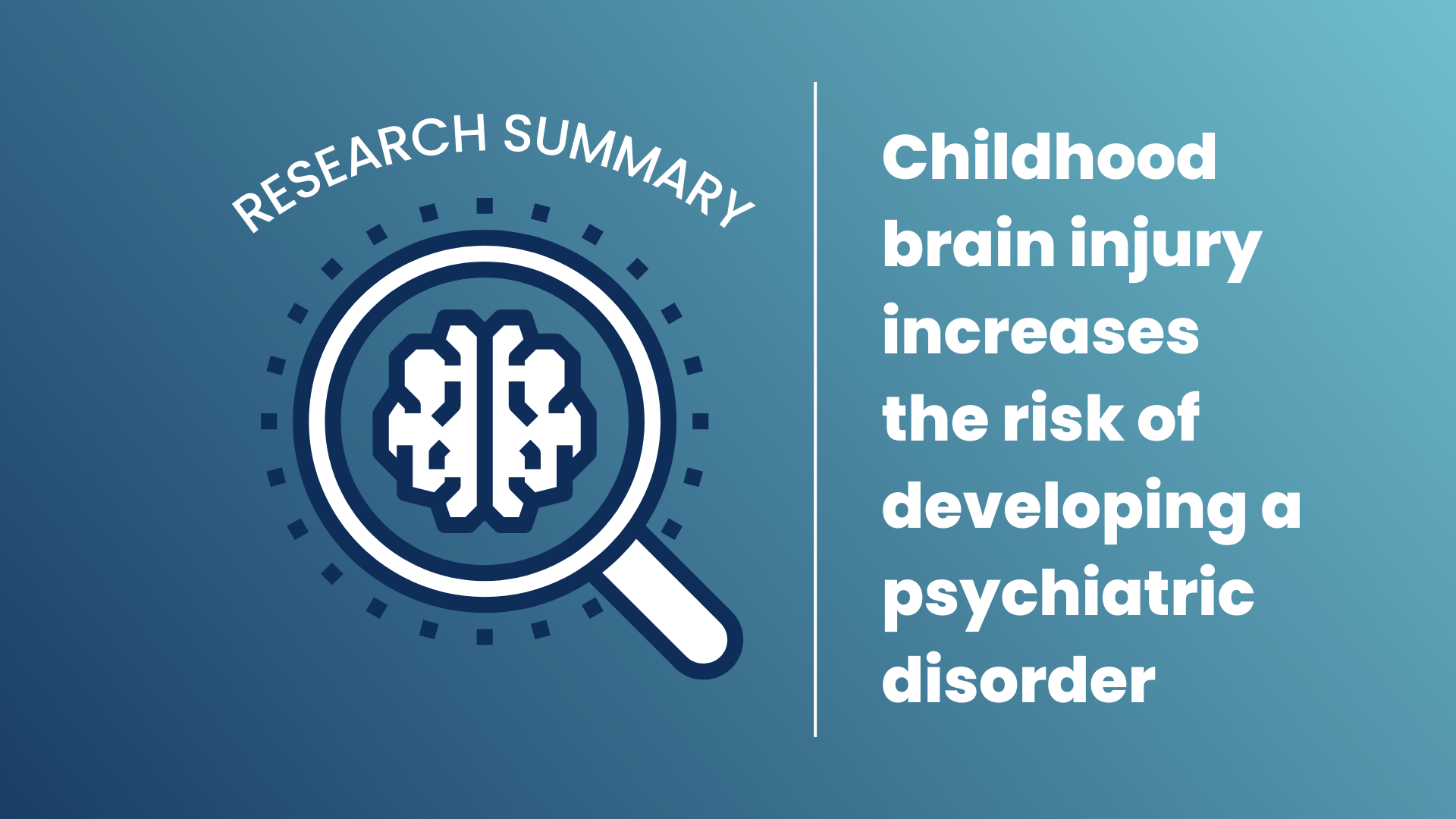
A Little Goes A Long Way
Your gift today is an investment in BrainTrust services that improve the lives of those with brain injury.
Donate Today


Pediatric traumatic brain injury (TBI) refers to injuries that happen prior to age 18
Globally, the incidence of pediatric TBI is 280 injuries per 100,000 people every year
In the 2 years after injury, children & youth with TBI have an increased risk of developing a psychiatric disorder
There is little research on long-term mental health outcomes of pediatric TBI (i.e., how a TBI sustained as a child may affect someone as an adult)
Participants were youth ages 6-14 hospitalized for mild to severe TBI in the United States
Participants were assessed at several timepoints:
The study had a good attrition rate: Of the 50 participants who initially participated in the study, 45 participated in the 24-year follow-up
Novel Psychiatric Disorder (NPD) = Psychiatric disorders which developed after the initial TBI (i.e., not a reoccurrence of a past psychiatric disorder)
The initial assessment measured:
Participants completed repeat psychiatric evaluations at the follow-up assessments
At the 24-year follow-up, a control group of healthy adults (i.e., no history of TBI or neurological conditions) were recruited to make comparisons to the TBI group (i.e., compare prevalence of psychiatric disorders in those with vs. without TBI)
The researchers made several predictions:
(1) They predicted that the TBI group (vs. the healthy control group) would have higher rates of psychiatric disorders at the time of the assessment (i.e., Current NPD)
(2) They predicted that the TBI group would have higher rates of psychiatric disorders at any point in the follow-up period (i.e., Any NPD)
(3) They predicted that Current NPD would be related to some of the variables measured at the first assessment (injury severity, family functioning, etc.)
(4) They predicted that the TBI group would have a shorter time to develop Any NPD compared the control group during the follow-up period
Any Novel Psychiatric Disorder (NPD-A)
Current Novel Psychiatric Disorder (NPD-C)
Factors predicting NPD
The prevalence of psychiatric disorders is 4x higher for those who sustained a brain injury in childhood
For those who sustain a pediatric TBI, there is a shorter duration to develop a psychiatric disorder and a longer duration of exposure (longer time living with psychiatric disorder)
Pre-injury psychiatric history may influence pediatric TBI outcomes in the short- and long-term
Future research should continue to investigate long-term psychiatric outcomes of pediatric brain injury
Source:
Arif, H., Troyer, E. A., Paulsen, J. S., Vaida, F., Wilde, E. A., Bigler, E. D., … & Max, J. E. (2021). Long-term psychiatric outcomes in adults with history of pediatric traumatic brain injury. Journal of Neurotrauma, 38(11), 1515-1525.
https://doi.org/10.1089/neu.2020.7238
We summarize a recently published research study every week to give you current, evidence-based brain injury information.